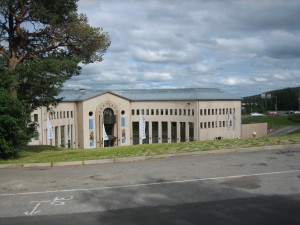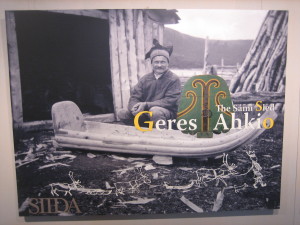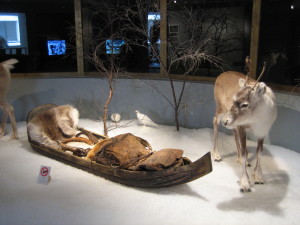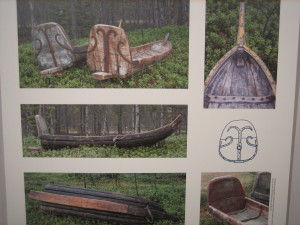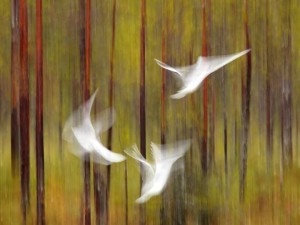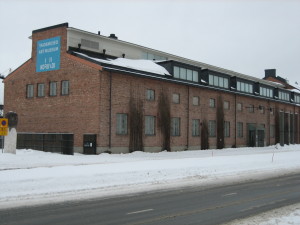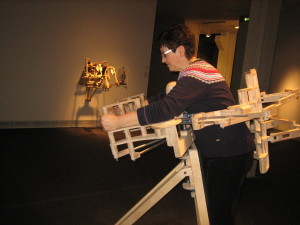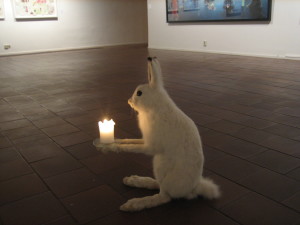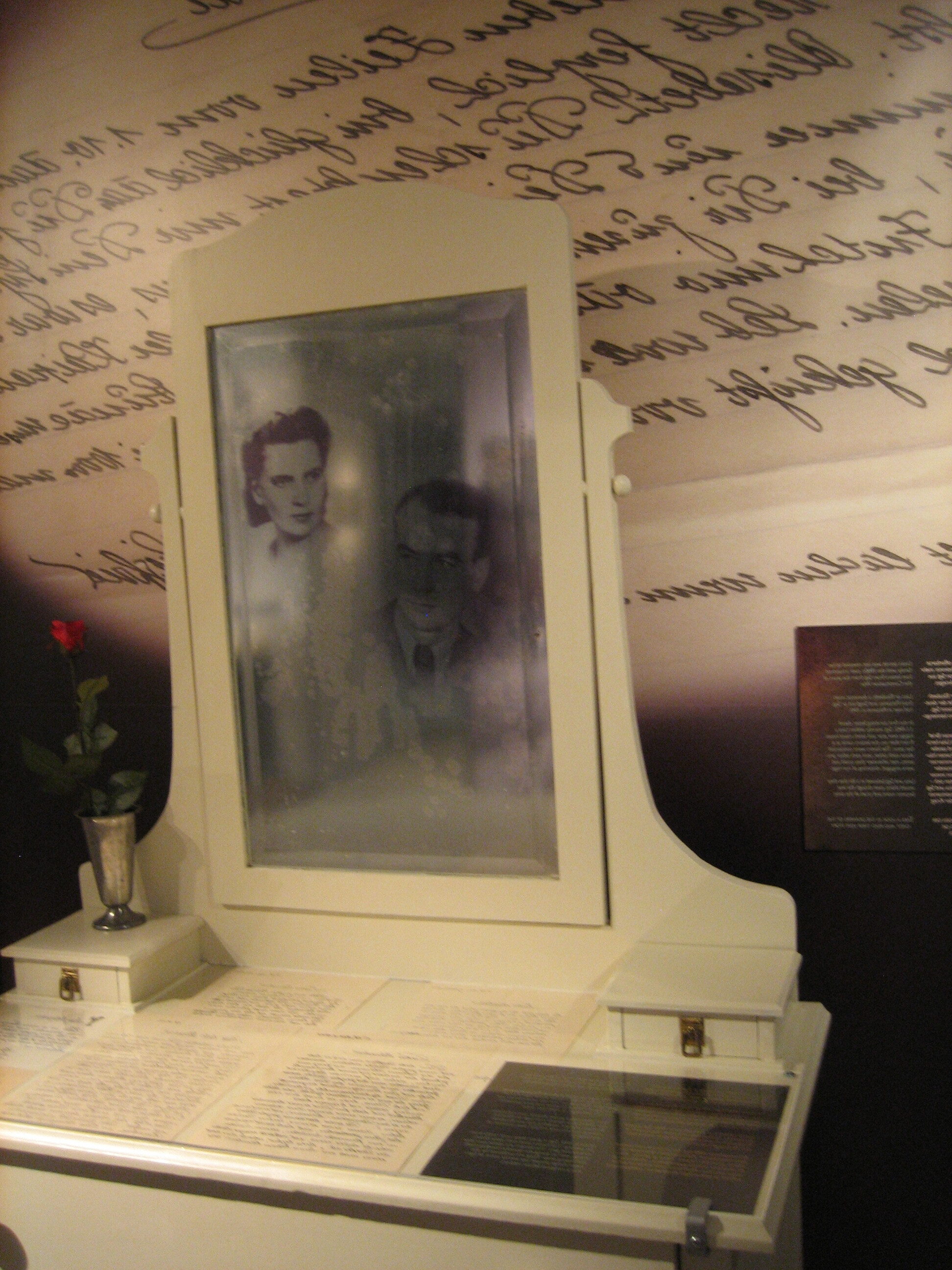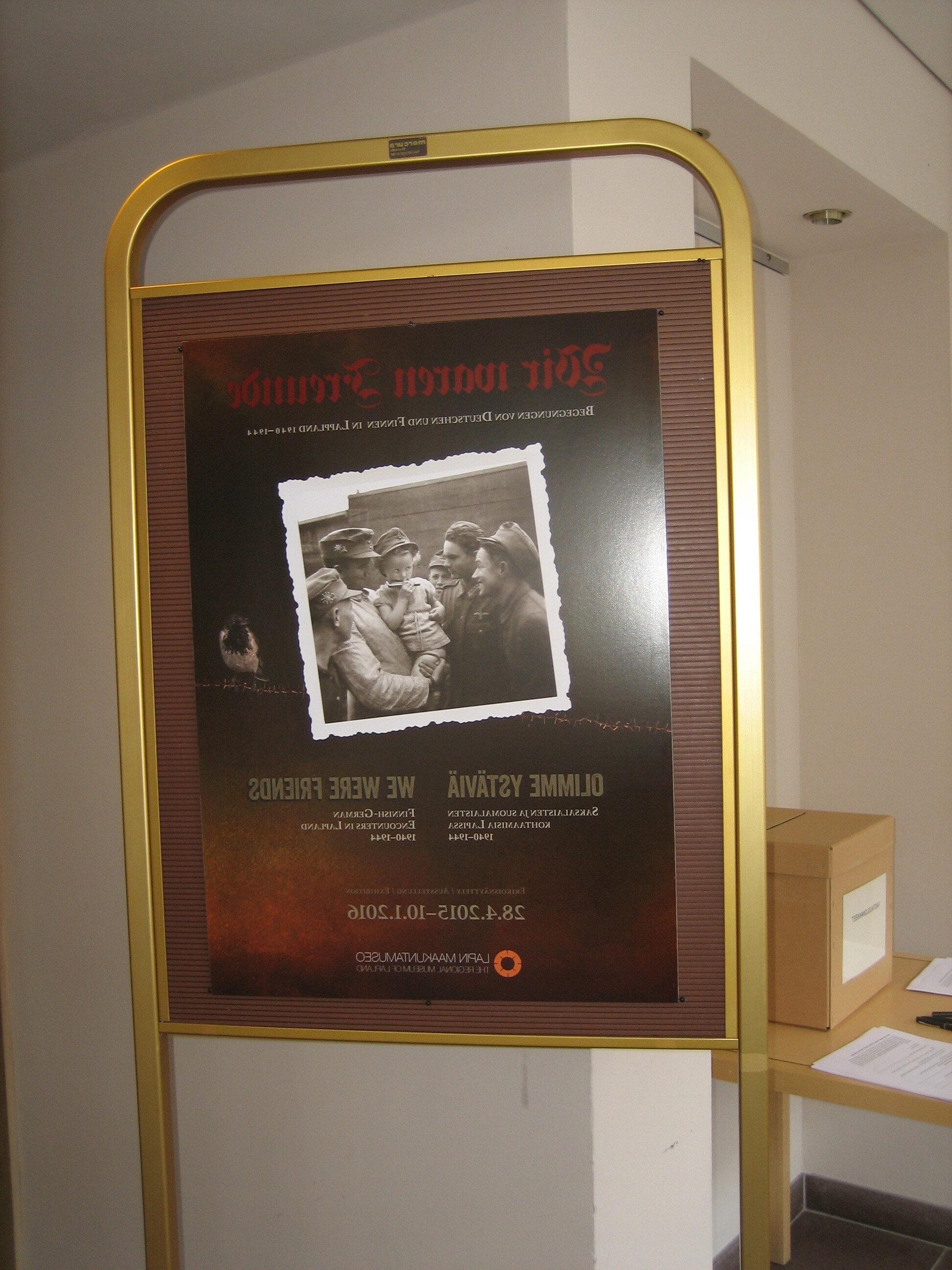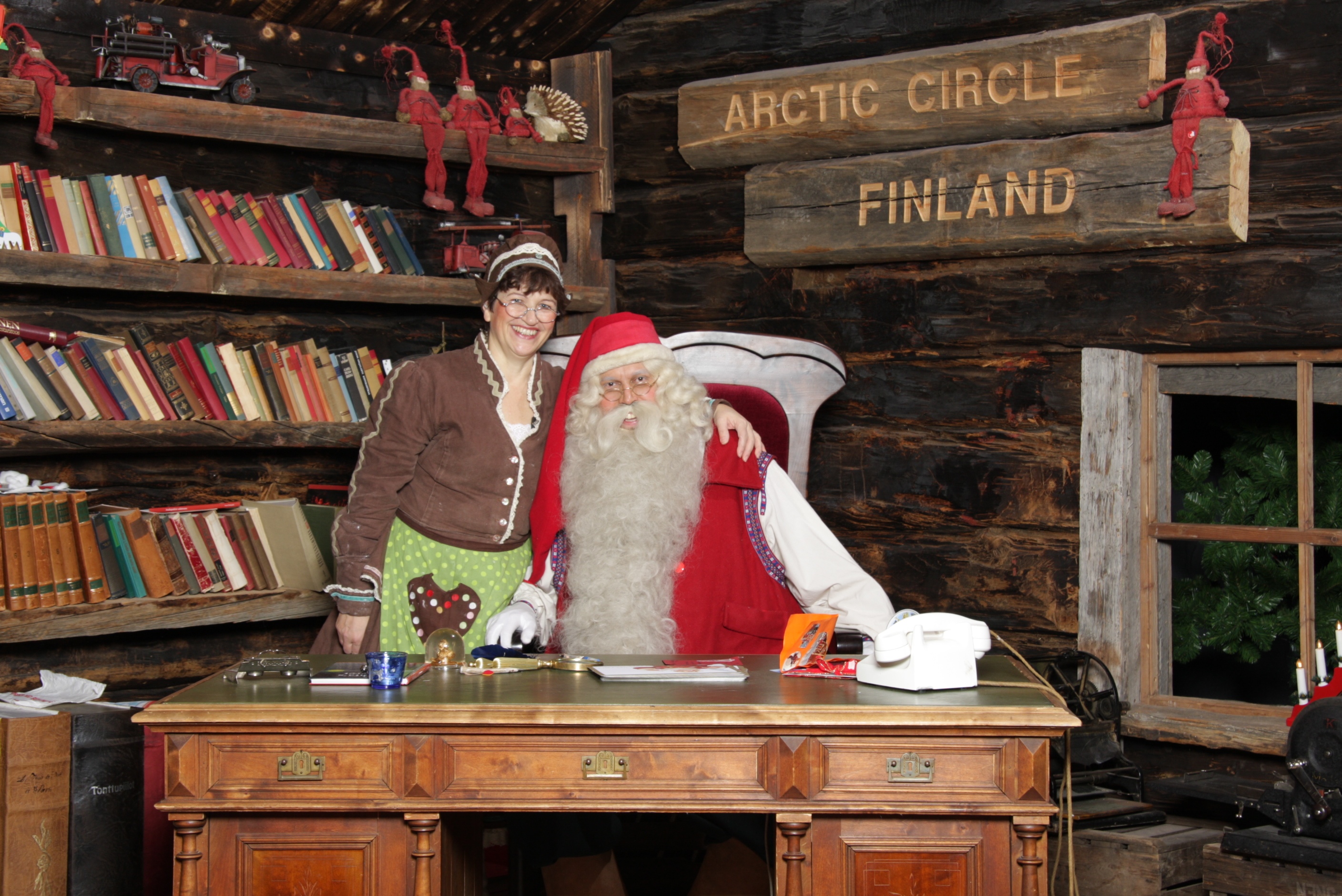Days when you do not want to go skiing, on a hike or otherwise spend outdoor, can be museum visiting days. In Rovaniemi there are the Arktikum museum and the Culture Center Korundi with the Art Museum; both worth a visit.
The Arktikum is a museum as well as a science center. Arktikum opened to the public on 6 December 1992, the 75th anniversary of Finland’s independence. It was designed by Danish architect group Birch-Bonderup & Thorup-Waade. The crescent-shaped new annex was designed by Bonderup and Lehtipalo, and it was completed in autumn 1997.
Local natural materials have been used in the building: the floors are made from Perttaus granite – the hardest type available in Finland – and from lime-washed Lappish pine. The chairs are made from birch and reindeer hide.
The most visible part of the museum, its glass corridor, is 172 metres long. The tube serves as the “Gateway to the North”, as the entrance is at the southern end and guests head north when coming in. As you walk in the glass corridor, there are exhibitions behind doors on both side of the corridor as well as along the walls in the corridor.
Two separate actors use at Arktikum: the Arctic Centre and the Regional Museum of Lapland.
The Arctic Centre of the University of Lapland is a national and international centre of expertise on Arctic issues. It conducts locally and regionally oriented research, the high standard of these researches is recognized internationally. The Arctic Centre also provides education on Arctic issues as well as disseminates knowledge about the region and related research.
The Arctic Centre exhibition “Arctic in Change” introduces the people and animals of the Arctic as well as details the ongoing changes that are affecting the region. The exhibition showcases the Arctic Centre’s research findings, which deal with issues like climate change and life today in the Arctic region. Some of the pictures are a bit scaring when you see what the climate change already has done to the earth and the nature.
The Regional Museum of Lapland is owned by the City of Rovaniemi. It was established in 1975 and together with the Rovaniemi Art Museum it forms the municipal museum function.
The Regional Museum of Lapland is an expert on Lappish culture, prehistory, history, building heritage and nature. The Museum produces content on the North for use in education, travel and its other cooperation networks. The Museum is also an active participant in research on questions related to these things.
The Regional Museum’s permanent exhibition “Northern Ways” leads guests into the history and culture of Finnish Lapland. The exhibition is a real experience that provides an introduction to the stories behind the houses of old Rovaniemi before the war as well as to popular beliefs and superstitions about the brown bear and the Eurasian elk.
Temporary exhibitions display different related topics about Northern and Arctic life. This spring there are temporary exhibitions about the Geres – the Sámi sled; how they were made and used in old days.
The Geres were like small boats “floating” on the snow behind a running reindeer. The Sami had different types of sleds for different purposes. There was also regional variation in different areas of Lapland. A driving sled, a decorated church sled was used for important trips to the church or courting trips. Goods sleds or caravan sleds could be either with a backboard, then called a backboard sled, or without one which was more common. Backboard sleds were used mostly by theSkolt Sámi. Those sleds suited well for transporting smaller objects and on the annual migration trips, which the Sámi used to make. Small children and small animals, such as sheep, were transported in goods sleds.
A lockable sled, or a lid sled, was bigger than the other sleds; it could be 2,5 metres long and had a convex wooden lid. The lockable sled was used for transporting the most valuable things, provisions, alcohol and the best clothes. A caravan sled could also have a loose lid that was fastened to the sled only when needed.
Sleds were treated with tar to make them more durable and to prevent the wood from rotting. The bottoms were tarred once a year. From the early 1900s people started to paint their driving sleds in bright colors and patterns.
This year the Lapland war is exposed in many different ways all over Lapland (70 years after the peace) and the Regional Museum of Lapland arranges an exhibition called “Wir waren Freunde – We were friends” about Germans in Lapland during 1940-1944.
A beautiful exhibition is the one about the Nature Photographs of the Year. Arktikum presents the winner of the Nature Photographs of the Year Competition. The winner photograph is “Dance of the Seagulls” by Matti Pukki. All photos are amazing!
The Art Museum and the Cultural Centre Korundi is situated in the centre of Rovaniemi. Korundi is easy to find as it is situated in the massive former post bus depot, built of red bricks in 1933. This iconic building is one of the few historical buildings that had survived the Second World War in Rovaniemi.
Rovaniemi Art Museum sets its main focus on Finnish contemporary art and Northern art. In its yearly exhibition program the museum introduces works from artists who either work in the North or are born there. The exhibition program also includes exhibitions from the Jenny and Antti Wihuri Foundation Collection as well as some interesting insights into Finnish and international contemporary art.
On Art Thursdays Korundi is open from 11am to 8pm with free entrance to the art exhibitions from 6pm to 8pm.
So, earlier this winter I went one Thursday night to look at the exhibitions from Petri Eskelinen’s mechanical pieces of art. The embracing machine “Mechanics of Embrace” was very impressive. Could be in use on the yearly “Hugging Day” on January 21st. When you move the former arms of the machine, the machine embraces you with arms around your back. Nice.
On the second floor there was the exhibition “Crazy Forest” with Finnish contemporary art; all of them with inspiration from the forest. Artists have always been inspired by forest. For Finns, forest is a very important part of nature. Our wintry forest is full of snow. Hares are white and so is Pekka Jylhä’s “Bearer of Light”. This piece of art made me laugh as I entered the exhibition.

